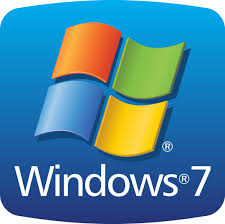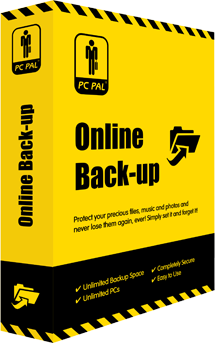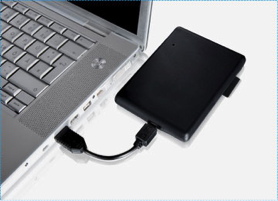Welcome to the PC PAL March 2014 Newsletter
This month we follow up our recent advice on buying a new computer and the end of Windows XP by explaining how to back up your data and, if you wish, securely dispose of your old computer.
It is important to make sure you have all your personal or business data backed up regardless of whether you are changing computers or not. Loss of data can happen suddenly for any number of reasons so it is always best to plan ahead and back up.
If you do follow our advice and replace an ageing Windows XP computer then you need to know how to safely dispose of your old machine. There are both data security and environmental issues to consider when disposing of any electronic storage devices. Our article this month will guide you during this process.
Please also let us know what you think of this month’s newsletter. We want to make sure it continues to cover subjects that interest and assist you and that it’s written in an accessible style.

Damian Holland - this month’s Editor, who operates PC PAL in the Stockport and surrounding areas.
Feature Article: Backing up your Data
The data stored on our computers can be priceless, yet many of us don’t have a plan in place to backup our data in an organised way. This data can consist of photos, documents such as CVs, our project work, presentations, emails, work documents …
There are many ways to back up this important data, and this article will highlight the different options. You can select the one most appropriate to you.
Option 1 – Manually Backing up your data
This is the easiest and quickest way to back up your data, you simply plug in a memory stick or external hard drive into a USB port on your computer and manually copy the files you want to backup to the external hard drive or memory stick.
You can do this daily, weekly or monthly depending on how often your data changes.
How to manually backup your data:
Step 1: Insert a Memory Stick or external hard drive into your Computer or Laptop.
Step 2: Press the 'Start Button', and then click 'Documents', select the documents you want to Backup, click 'Organise' and 'Copy'.
Step 3: Press the 'Start Button' again, go to 'Computer', Select the Memory Stick or External Hard Drive in the Devices with Removable Storage list, and click 'Organise' and 'Paste' to copy the selected documents to the memory stick.
Your documents are now backed up to your memory stick or external hard drive. You can do the same with Pictures, Music and Videos.
Option 2 - Using a Backup Program
If you believe the manual method is a bit too time consuming, or you prefer a more hands-off approach to backup, then this method may suit you more.
In this method you install a Backup Program, tell the program what to back up, when to backup, and how often to backup, and the program will look after scheduling and running the backups.
This method still requires you to install an external Hard Drive to back up your data.
How to Backup your data using a Backup Program:
- Download and install a backup program from the internet to your computer. (There are numerous…)
- Run the backup program
- Tell the program what files and folders to backup
- Connect your backup media (e.g. external hard drive) to your computer
- Tell the program what time to backup your data. You can set the time to be any time in the day; it is usually a good idea to set the time to an hour where you are not using the computer, usually at night, as the backup can slow down the computer. However make sure that the computer is on at this time, and that the external media is connected at the set time, otherwise the backup will fail.
- Next tell the program how often to backup your data: daily, weekly, monthly. This will depend on how often you change/edit your files, or add new files.
- That’s it! Your backup program will now look after your backup automatically. It will back up the selected files and folders at the set time, at the set interval.

Option 3 – Backup using the Cloud
Cloud backup refers to backing up data to a remote server on the internet.
Your data is stored on the internet using a Data Storage Service provider, rather than storing locally on a physical hard drive or computer. Since your stored data is on the internet you can access this data from anywhere in the world, or from any device, as long as you are connected to the internet.
This means all your important pictures, videos, files, and documents are securely stored and available to you 24 hours a day 7 days a week. Your data is backed up securely and can be encrypted. This prevents anyone else from accessing, changing or damaging your files.
Data stored in this way is also reliable, in that the Data Storage Service provider will not lose your data.
Below are some of the more common Cloud backup providers:

You can also easily share these files, or a selection of these files with your colleagues or family. The disadvantage is that you can’t backup specific folders such as My Documents, or My Pictures.
The basic Dropbox account is free and provides 2 GB of storage, you can earn up to 16 GB of additional free space by referring your friends to Dropbox.
If you need more space than this you need to upgrade your account which will require payment.

Google drive allows you to create documents, spreadsheets, and presentations using Google’s Office software, share and collaborate on these documents with work colleagues and friends. You can then convert them to more standard formats such as MS Office word documents before emailing them to others.
The basic Google Drive account is free and provides 15 GB of storage; again if you need more space than this you need to upgrade your account and pay.

OneDrive also allows you to collaborate on documents (Word, Excel, PowerPoint) with others as long as they also have a Microsoft account.
The basic OneDrive account is free and provides 7 GB of storage; if you need more space than this you will have to pay to upgrade your account.

You can specify as many folders as you like, or you can backup your entire computer. If you update any of these files, the updated file will automatically get copied to the cloud.
PC PAL Online Backup will keep a file on its servers for a month after you’ve deleted it, so if you accidently delete a file on your computer, you can still retrieve the file from PC PAL Online Backup within the 30 days.
Your PC PAL engineer will be pleased to assist you to decide the right backup solution for your circumstances and help you put it in place.
 This article was written by Paddy McNulty, who operates PC PAL in Limerick and surrounding areas.
This article was written by Paddy McNulty, who operates PC PAL in Limerick and surrounding areas.
Feature Article: 'Breaking up' is hard to do
The data on your computer is normally held on its internal hard drive, which is a mechanical device that uses glass platters for storage. You can think of a hard drive as a digital filing cabinet. Because the platters spin at thousands of revolutions per minute, and it has other fast-moving parts, if you’re unlucky the drive may develop a fault or fail completely after years of use. Hopefully you’ll already have a backup of your data (see our comprehensive article this month if not).
Similarly, when you replace an outmoded computer or choose to increase your computer’s storage capacity - so it can hold more pictures, music or video - you’ll want to consider what to do with the old hard drive, for data protection and environmental reasons. The last thing you want is your old drive, full of personal information, ending its life in someone else’s hands or a landfill site.
Re-using computer equipment saves energy and resources. It also prevents hazardous materials going to landfill. Research proves that reuse of computers is better for the environment than recycling.
One study has found that the production of every desktop PC consumes 240kg of fossil fuels, 22 kg of chemicals and 1.5 tonnes of water. This environmental impact means that it’s important to recover the full productive value of every PC through reuse before eventually recycling it to recover parts and materials at its true end-of-life
Refurbished computers provide many thousand hours of training in developing countries and contribute to basic computer literacy for children and adults alike.
So when the time comes to replace your old computer or replace its hard drive, what are your options?
PC PAL advises strongly against physically breaking up an old hard drive. Not only can it be difficult or even dangerous for an inexperienced person to extract and destroy the hard drive but you will still have the issue of disposing of the remains lawfully.
Electrical and electronic equipment that can’t simply be thrown away will carry the ‘crossed out wheelie bin’ symbol, which looks like the image below.
If it’s mechanically sound you have the option of erasing the data from the old hard drive, but just hitting the delete button is not enough to wipe the data. It may be harder to find, but a knowledgeable and malicious person could retrieve your data. Before you ask a third party to dispose of the hard drive we recommend that you ask them what data-wiping programme they will use to ensure that data recovery is subsequently impossible.
Reputable and responsible retailers will recycle old computer equipment on your behalf – typically the entire tower unit or laptop, not just the hard drive – when you buy a new or refurbished computer from them. You can ask for a certificate of secure data erasure, which the best re-users/recyclers will provide
The Regulations do not require household users to dispose of electrical and electronic equipment in a certain way. However, they are strongly encouraged to dispose of WEEE separately from household waste and make use of the collection facilities provided under the Regulations. The Regulations do not entitle you to free collection of WEEE.
Retailers, producers and your Local Authority may offer collection services, but they may charge for this service.
Read more about the Waste Electrical and Electronic Equipment (WEEE) Regulations and find your collection facility at: https://www.recyclenow.com/facts-figures/how-it-recycled/electricals
For more information on recycling an old PC, please contact your local PC PAL engineer to discuss the available options.
 This article was written by Bruce Meredeen, who operates PC PAL in the Tunbridge Wells & Wealden areas.
This article was written by Bruce Meredeen, who operates PC PAL in the Tunbridge Wells & Wealden areas.
We hope you have enjoyed reading this month's PC PAL Newsletter. Before we go we would like to remind you one last time that Microsoft is ending Windows XP support on the 8th April 2014.

Many thanks to my colleagues who have written this month's articles. We will be covering more topics next month, including how to prevent and deal with spam and other unwanted software.
Next month we are also hoping to change the format of the newsletter. We aim to bring slightly shorter articles, which link to further information on our Blog. This will mean we can include more topics and it will be easier to view them on mobile devices.
PS... Don't forget to forward this email to your friends, family & work colleagues - we're sure they'll appreciate the tips and advice!
This month's recommended product

It's a well respected product which works hard to protect your computer. Please contact us for further details.
Stay Safe. Stay Protected.












